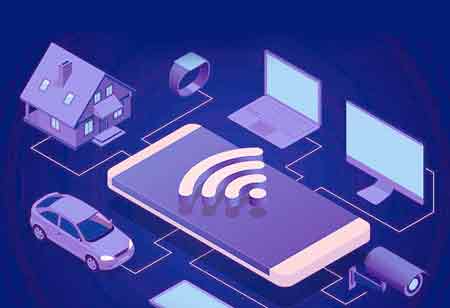THANK YOU FOR SUBSCRIBING
What Does the Future of Pharmaceutical E-commerce Look Like?
As in many other fields, the Covid-19 pandemic exacerbated long-standing industry issues while also creating

By
Apac CIOOutlook | Saturday, December 04, 2021
Stay ahead of the industry with exclusive feature stories on the top companies, expert insights and the latest news delivered straight to your inbox. Subscribe today.
Pharmaceutical vendors can use e-commerce integration to offer patients and providers an easy, efficient way to search for and purchase the drugs they require. In a B2C context, this means that patients can buy and receive prescription drugs from the convenience of their own homes.
Fremont, CA: As in many other fields, the Covid-19 pandemic exacerbated long-standing industry issues while also creating new ones, necessitating rapid innovation. The pharmaceutical e-commerce space, in particular, saw massive pandemic-induced growth, as evidenced by data from CVS, which showed that the company saw online prescription orders increase 1,000 percent during the early stages of the pandemic.
Pharmaceutical e-commerce can enable efficient, easy, and transparent prescription drug purchasing in both a business-to-business (B2B) and business-to-consumer (B2C) context, inevitably leading to increased demand for such offerings across the board. It is critical that pharmaceutical vendors and manufacturers prepare now in order to keep up with and compete successfully in this rapidly growing market.
Covid-19 Boosted Healthcare E-Commerce
The Covid-19 pandemic has directly accelerated the growth of e-commerce in the face of various travel restrictions and lockdowns around the world. According to recent Adobe research (via Forbes), the shift to e-commerce is permanent, and the e-commerce industry as a whole is expected to reach a staggering $1 trillion by 2022. This e-commerce boom will continue to include the online healthcare industry, which will evolve to meet the ever-changing provider and patient requirements in this increasingly digital world.
With the global healthcare e-commerce market expected to reach $435.8 billion in revenue by 2025, it is clear that both businesses and the general consumer population have a desire and a need for online health products and services. This is especially true for pharmaceuticals, where online sales are gaining traction in tandem with the overall pandemic-induced growth of e-commerce.
Pharmaceutical E-Commerce for Patients and Providers
E-commerce behemoths like Amazon and Alibaba have made significant investments in their online pharmacy businesses in the last year. Amazon Pharmacy enables patients to order prescription drugs through the online retailer's platform, whereas Alibaba Health intends to provide similar services as well as other relevant technologies to both patients and providers. These companies will almost certainly not be the last to enter the online pharmacy field, so it is critical to keep track of who is in the space and who plans to enter it, as well as what types of products and services they are offering.
Pharmaceutical vendors can use e-commerce integration to offer patients and providers an easy, efficient way to search for and purchase the drugs they require. In a B2C context, this means that patients can buy and receive prescription drugs from the convenience of their own homes. Comprehensive pharmaceutical e-commerce platforms in a B2B context can allow providers to compare and contrast all of the different, constantly fluctuating factors involved in drug purchasing — including current drug availability and prices — to enable informed drug spending.
See Also : Pharma Outsourcing Companies





